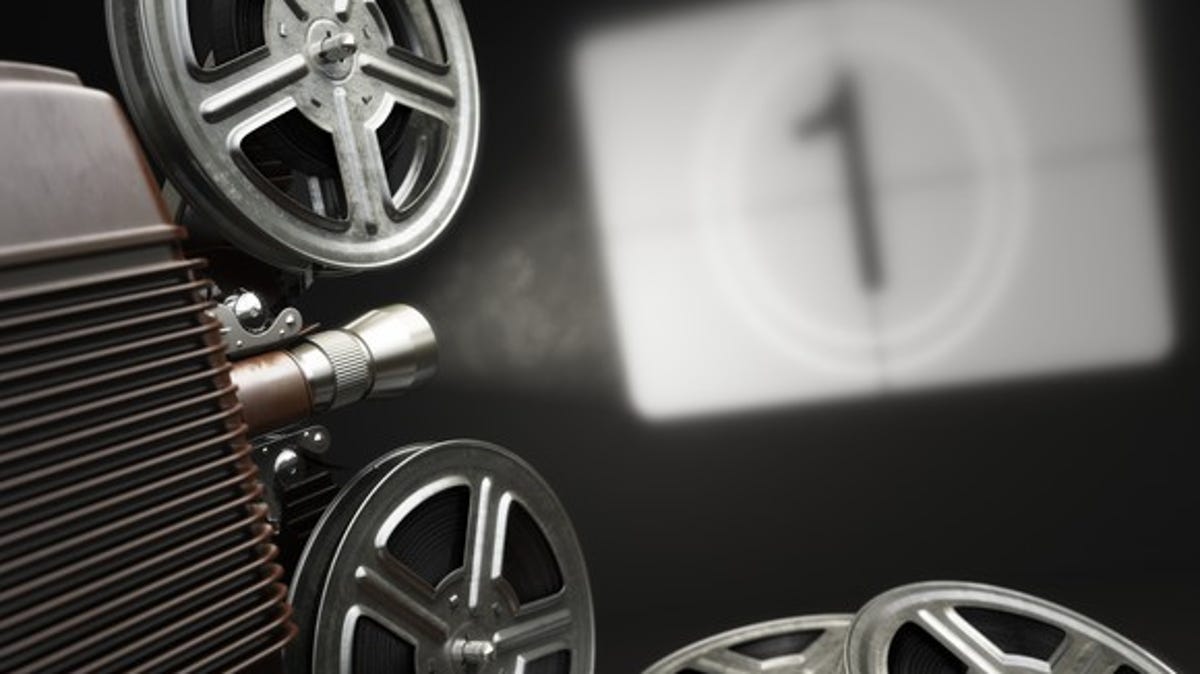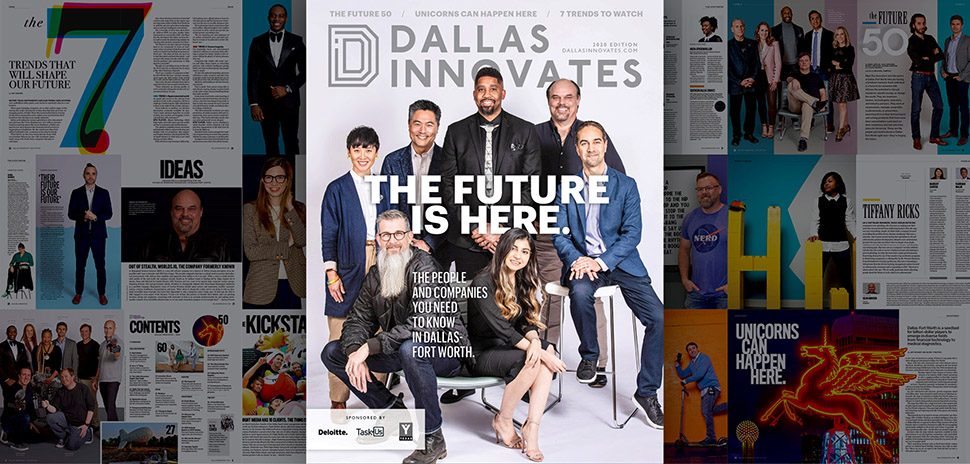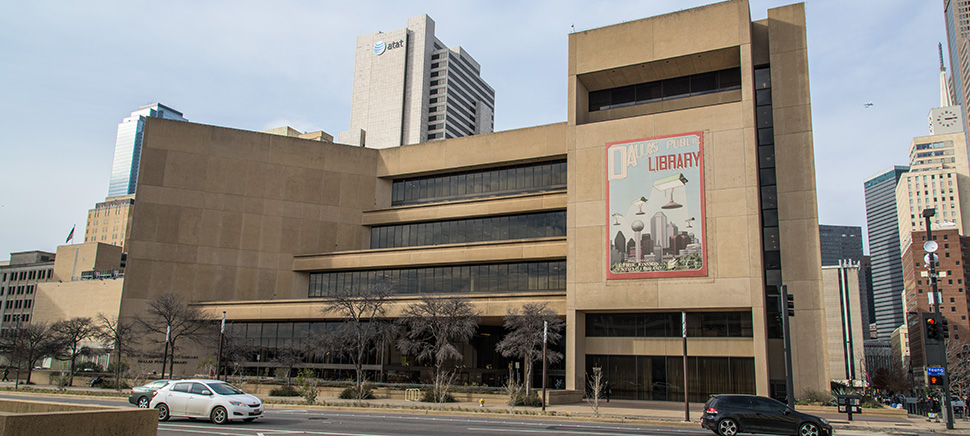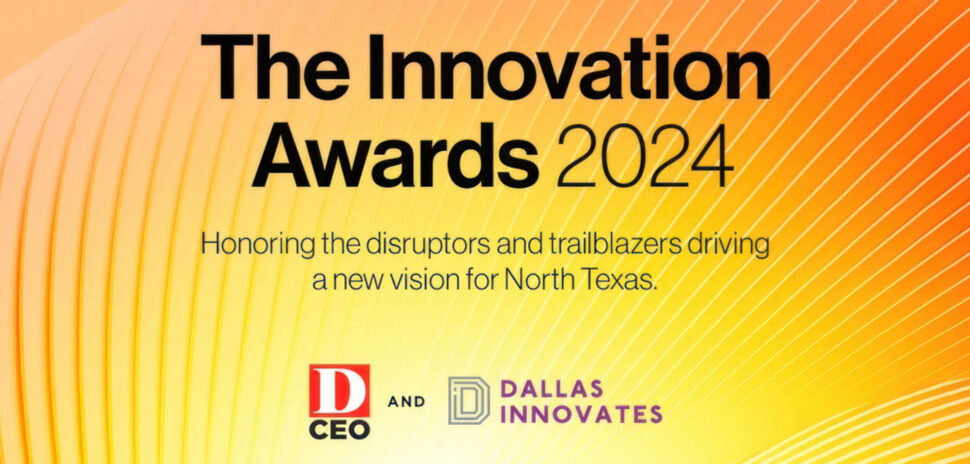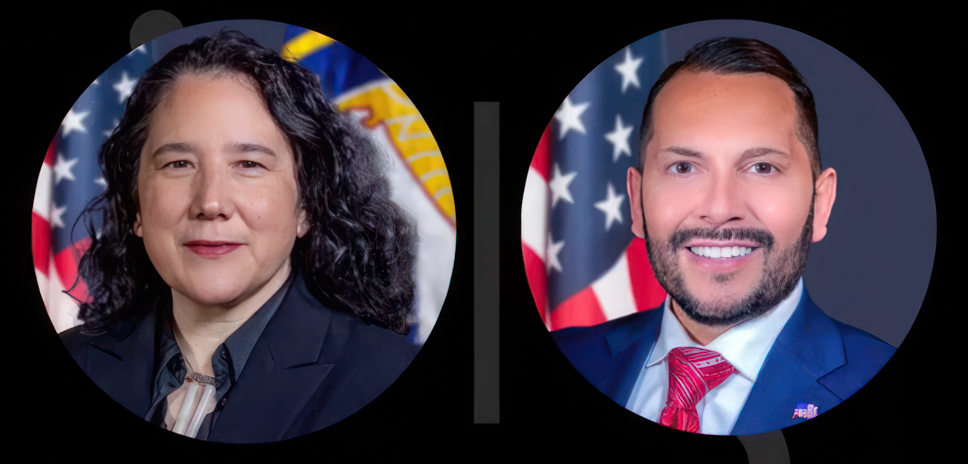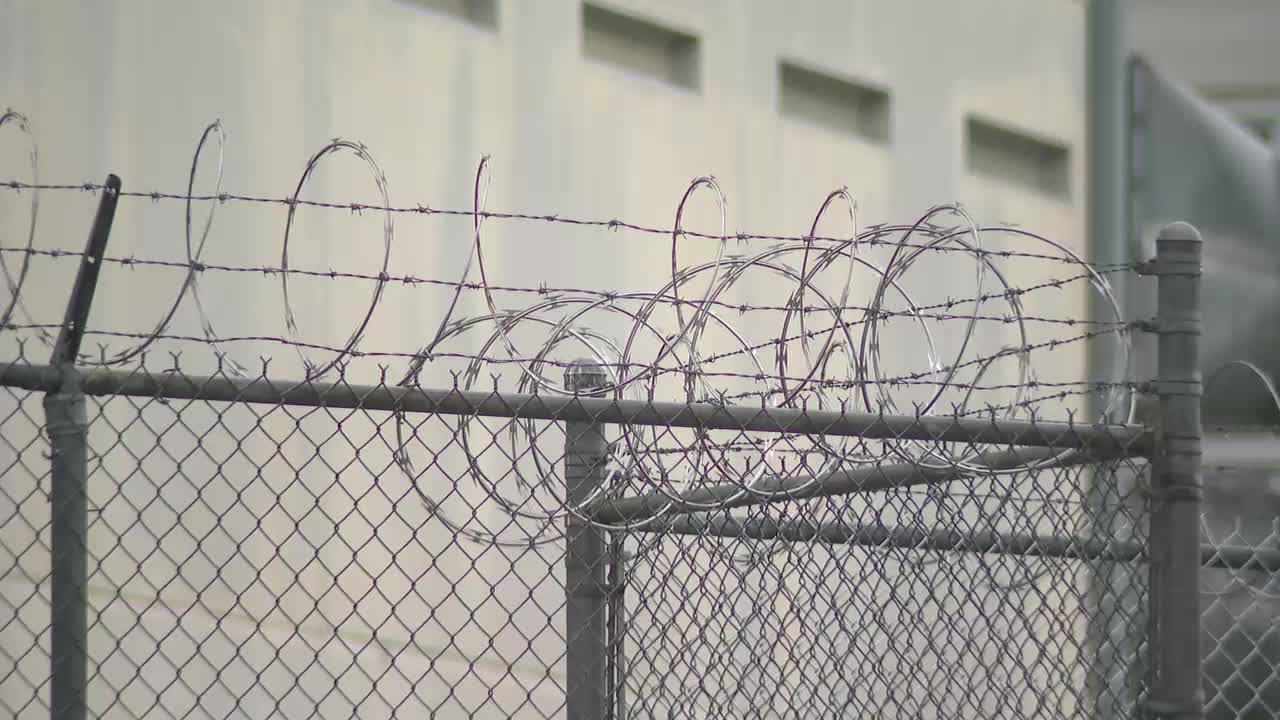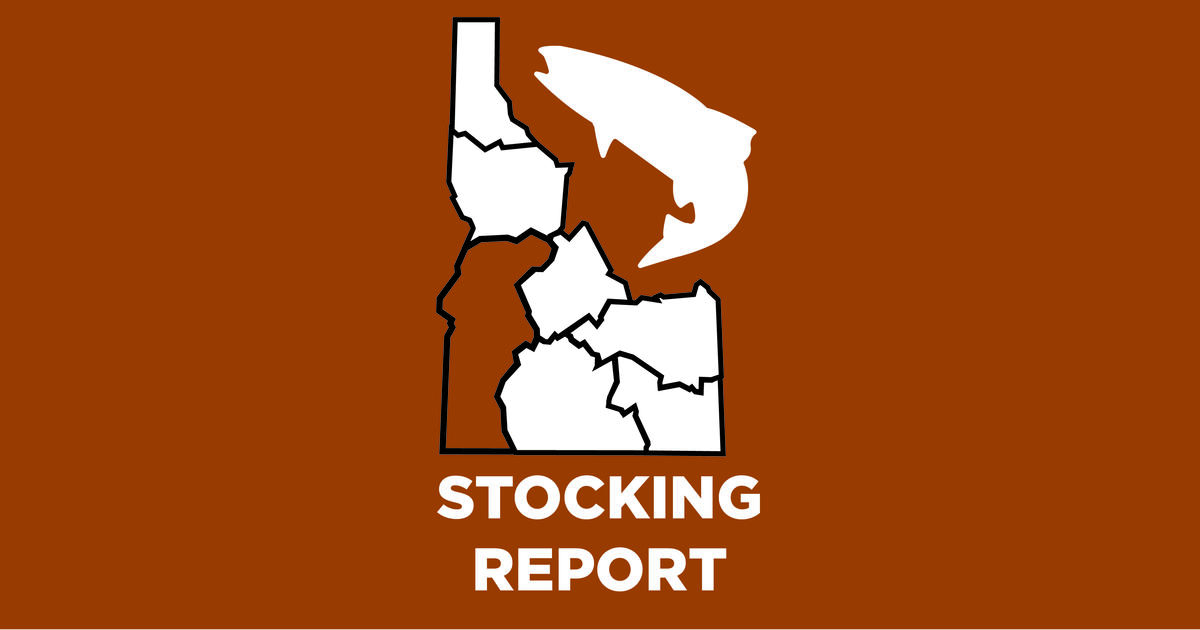Dallas, TX
Dallas Cowboys Cheerleaders Series Moves To Netflix

Netflix is heading to cheerleader try outs for its latest sports docuseries.
The streamer has ordered America’s Sweethearts: Dallas Cowboys Cheerleaders.
It comes after Dallas Cowboys Cheerleaders: Making The Team ended its 16 season run on Paramount cable network CMT in 2022. At that time, Cheerleader director Kelli Finglass, who is involved in the Netflix series, said that they were in the “process of negotiating a new partnership” on a “new platform”.
The series follows the 2023-24 Dallas Cowboys Cheerleaders squad from start to finish — kicking off at auditions and training camp and continuing all the way through the NFL season.
It comes from director Greg Whiteley and the team behind Cheer and Last Chance U.
The seven-part series is led by Finglass as they open their doors to document the personal stories behind the uniforms.
It is produced by One Potato Productions and Boardwalk Pictures in association with Campfire Studios. Exec producers include Greg Whiteley and Adam Leibowitz of One Potato Productions; Andrew Fried and Dane Lillegard of Boardwalk Pictures; Ross M. Dinerstein and Rebecca Evans of Campfire Studios.
“The kind of access and creative freedom we need to make the kind of work we want to make is not easy to come by—especially when dealing with a brand as large as the Dallas Cowboys,” said Whiteley. “To their infinite credit, the Cowboys offered unfettered access for the year we filmed the DCC and left us alone. The result is an authentic portrait of one of the most storied and beloved institutions we have in American pop culture.”

Dallas, TX
In Dallas, Even the Sidewalks Are for Sale
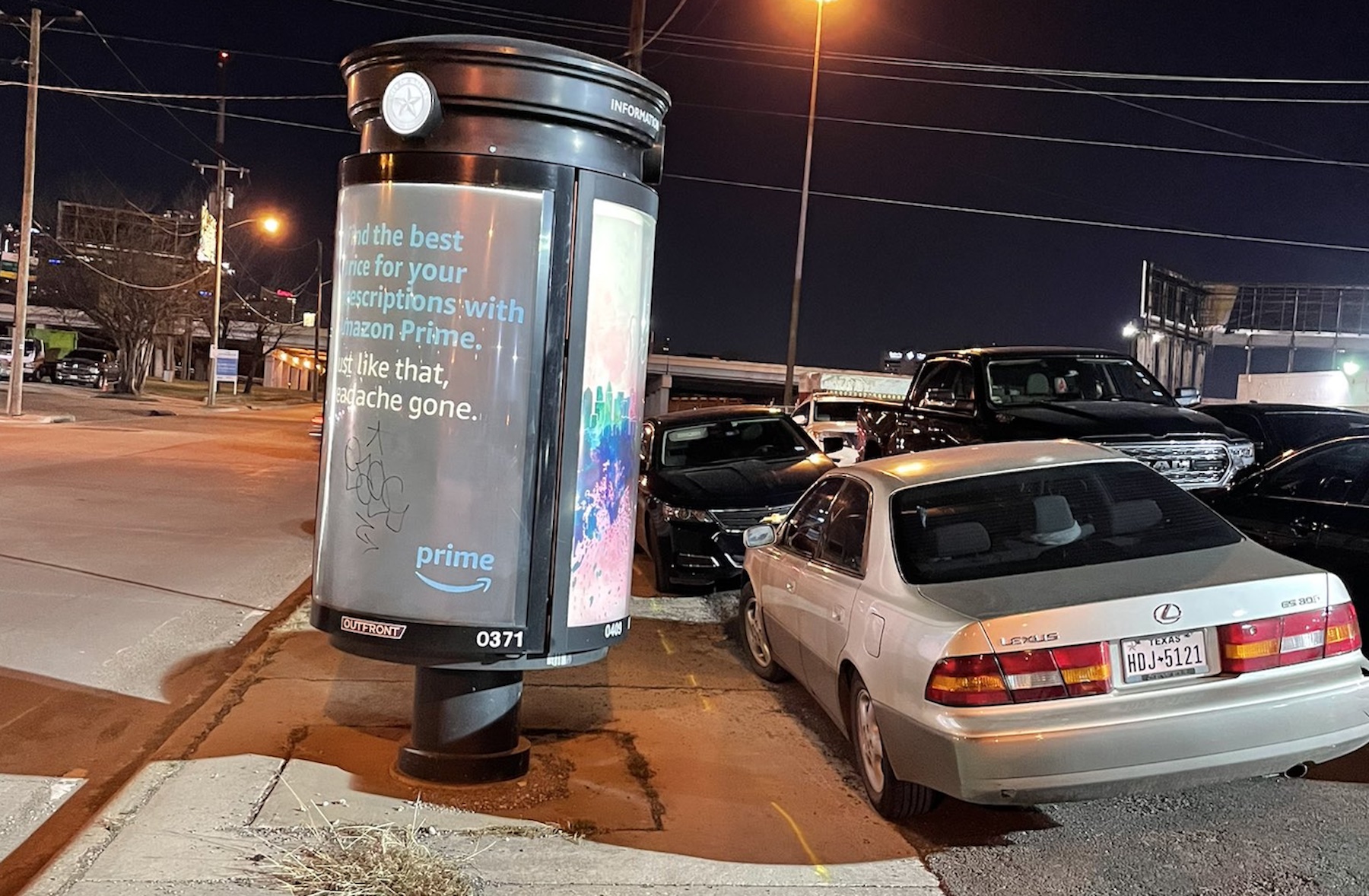
The city of Dallas once again wants to monetize its sidewalks. Later today, the Dallas City Council will be briefed on a plan to enter into a contract in June with a company that will plant interactive digital kiosks in downtown and other neighborhoods, likely on sidewalks. The vendor would make money from advertising and share the revenue with the city for permission to use Dallas’ right of way.
We’ve been through this before. There are 137 bulbous kiosks presently jutting out into walking paths all over the city, from downtown up to Forest Lane. The City Council unanimously approved them in 2005 and by the next year, then Mayor Laura Miller was complaining about the “giant spaceship[s]” on our public sidewalks. Whoops! Today, 18 years since their installation, some slump and lean. The plastic that covers the ad has turned scratched and cloudy, a decent canvas for quick graffiti. Some of them were placed, as the image above these words shows, right where people walk. The city can’t pull them up until 2026, when the existing contract expires.
I suppose it’s important to note that the kiosks the City Council will learn about today are not exactly like the tubes that we’ve learned to live with. They’re sleeker, about 8 feet tall and 3 feet wide, compared to the 6-foot-tall, 4-foot-deep stubs that don’t do much other than show you an Amazon Prime ad. The new ones will have wifi. They can provide directions and highlight events and other amenities. Some can have EV charging, which might work near parks. The presentation also lists such unbelievably vague and nebulous benefits as, in the city’s words, “limitless innovation” that promises “development of state-of-the-art content and features.”
So they’re like a bunch of really big, static smartphones that we may or may not have to dodge as we’re walking to work. And we’ll have them by the World Cup! And when the World Cup leaves, we’ll still have them.
Since 2006, the city has made $16.7 million from the kiosk program, which sort of sounds like the municipal version of a low-yield savings account. There are many people who don’t think the potential revenue is worth the risk of worsening our already subpar pedestrian infrastructure. Too, the Department of Public Works didn’t ask for public input before putting the matter out to bid. Downtown businesses, already frustrated by the existing obstacle course of kiosks, raised a stink. In February, the City Council ordered public works to pull the bid and hold a couple of listening sessions, which concluded this week.
They did not find much support for the idea.
“This plan has been met with overwhelming opposition from stakeholders throughout the greater Downtown area who say there is no appetite for more urban sidewalk obstructions,” said Jennifer Scripps, the executive director of Downtown Dallas Inc. Her concerns were echoed by Councilmember Paul Ridley, whose district includes downtown, Uptown, and portions of East Dallas. DDI on Tuesday night sent a letter to Council urging them to deny issuing another Request for Proposals. (The RFP is the formal name for the bid.)
Stephanie Hudiburg, the executive director of the Deep Ellum Foundation, pointed to the special purpose sign district ordinance that explicitly bans digital displays and signage in the neighborhood just east of downtown. (The foundation hasn’t submitted an official stance to the city, but it seems like they got ahead of the issue.)
“A large part of the intent behind that particular rule was to preclude digital kiosks, which city staff can attest to,” she wrote in an email. “As a historic district, our stakeholders prioritized an analog vs. digital aesthetic as most fitting to Deep Ellum.”
The city’s own presentation lists a litany of concerns: impeding walkability, violating ADA, vehicular distractions, “negative aesthetic,” and potential for vandalism. The two pros include public safety additions like emergency call buttons and cameras, and the promotional aspect of “showcasing local businesses.”
Intentional or not, the RFP appears tailored for an Ohio-based vendor called IKE Smart City, LLC. (That stands for Interactive Kiosk Experience.) Dallas employees identified 18 other cities that have entered into agreements with the company, each of which makes sure to say that their 8-foot-tall kiosks are “multilingual” and “ADA-compliant.” The city wants to move quickly. It is asking Council for permission to reissue the RFP in May and approve it by June.
During a briefing last May, Hatefi could not say how many are being proposed or where they might be located. That would get worked out in the contract. Too, the city doesn’t seem to know how much revenue this might bring in. We do know the revenue is tied to selling ads, so Hatefi expected they would be placed near “the most advantageous locations that their advertising could generate revenue.” Which likely means in places where people are walking. (And 20 percent of them will be in “equity zones” defined by the city.)
City records show that registered lobbyist Randall Bryant organized at least two meetings in 2022 with Assistant City Manager Robert Perez on behalf of IKE Smart City. There was also a phone call with City Councilmember Tennell Atkins that same year. (Bryant didn’t respond to questions.)
There are scenarios where these can work. Dallas Area Rapid Transit has installed more than 300 digital kiosks near some of its bus and rail stations, which are set aside and deliver status updates to riders. The kiosks being considered by the city of Dallas are clearly intended for tourists. Maybe they work around Fair Park, as Councilmember Adam Bazaldua has suggested, or the Southern Gateway Deck Park once it opens. Klyde Warren, the Farmers Market, the future convention center—sure, maybe, but they shouldn’t be in sidewalks.
You can probably walk outside your office right now and find an example of why.
Author

Matt Goodman
View Profile
Matt Goodman is the online editorial director for D Magazine. He’s written about a surgeon who killed, a man who…
Dallas, TX
Coming together to support the Dallas bond package
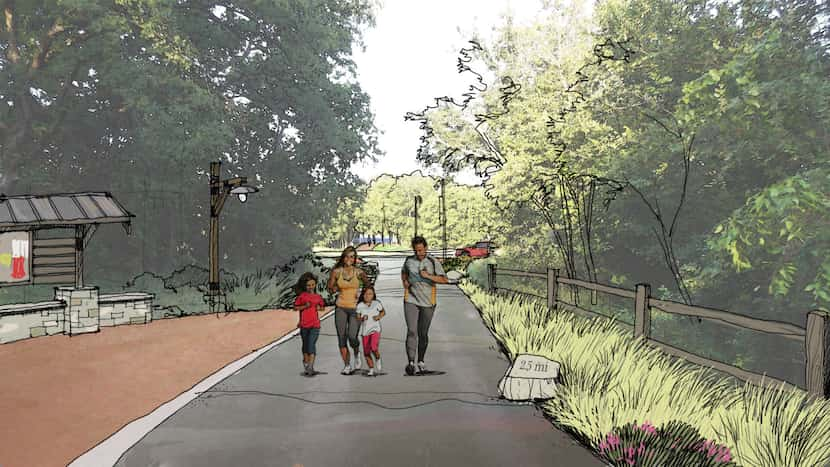
This 2024 Dallas bond package is the culmination of more than a year of work and tens of thousands of hours of discussion on critical infrastructure that will strengthen our entire city.
The $1.25 billion bond package divided into 10 bond propositions now in front of voters is the result of input from 90 volunteers who diligently served on the Community Bond Task Force and task force subcommittees, dedicated city staff and hundreds of Dallas residents who took time to share their thoughts on what our communities need.
We believe voters should support this package because each of the 10 propositions will provide equitable solutions to infrastructure needs that will lead to an increased quality of life across our entire city — a big reason why The Dallas Morning News has already recommended voting “yes” on all 10 bond propositions. But for those who might still be on the fence, here are a few more reasons you should cast your vote in support of each of the propositions in the bond package.
First, this bond package is about funding infrastructure basics. About half of the total bond amount will be used to improve our streets and sidewalks. That means fewer potholes and smoother commutes and improved walkability across the entire city. In addition, these bonds will fund investment in critical flood protection and storm drainage systems that will literally keep neighborhoods above water, saving property and people’s lives.
This bond package will also be an investment in green infrastructure and will provide for a historic, equitable investment in parks, trails and green spaces. With voter approval, $345 million will be directed to parks and trails projects across the city, helping more residents share in the vision of having a neighborhood green space within a 10-minute walk of home. These dollars will also support transformational green projects like the Five Mile Creek Greenbelt, which will add 17 miles of trails and three signature parks to some of Dallas’ most historically underserved communities. Voter support of this investment will allow residents access to the many health and wellness benefits that close-to-home parks access can provide, and it’s why The Dallas Morning News said the parks proposition was “a generational investment in our health.”
Other critical projects that stand to benefit from the passage of the bond include the construction of a Law Enforcement Training Center at UNT Dallas that will help Dallas attract the best officers and train them in 21st century police strategies. Bond funds will help maintain our city-owned art and culture facilities, protecting valuable assets and historic works while allowing our arts community to entertain residents and draw visitors from around the world. The funds will allow for affordable housing infrastructure that will support workforce development, economic growth and stronger communities.
This broad array of projects is worthy of voter support on their own. But what’s critical to note is that supporting the bond package will allow for multiple opportunities to access matching funds from federal and philanthropic grants and private donations that will substantially magnify the scope and impact of the projects. The Dallas Zoo, the Dallas Museum of Art, and the Law Enforcement Training Center at UNT Dallas are just a few examples of public-private partnerships where bond approval will trigger access to private funding that is three, four or even five times greater than the bond allocation. Approval of the bond package is key to tapping into these additional investment dollars that will support our world-class facilities and amenities.
In addition, the bond program is a great way to invest in our city infrastructure without raising taxes. These general obligation bonds provide Dallas with the needed tool to fund capital improvements that cannot otherwise be funded from the city’s annual operations budget. Voting for the bond will authorize the city to issue bonds up to the amount indicated for each proposition to fund capital improvement without an increase to the current tax rate. This level of investment in maintaining and improving our infrastructure is also key to attracting residents and economic growth.
Election Day is Saturday, May 4. Please join with neighbors across our city to support stronger basics and better quality of life for all of Dallas. Vote “yes” on all 10 propositions — let’s do this together, for Dallas.
Arun Agarwal is the CEO of Nextt, a Dallas-based textile company, president of the Dallas Park and Recreation Board and served as chair of the Community Bond Task Force. Ambassador Jeanne Johnson Phillips is an American businesswoman and diplomat who served as U.S. ambassador to the Organisation for Economic Co-operation and Development from 2001 to 2003. She also serves as conveying co-chair of the 2024 Dallas Bond Campaign. Tim Powers serves as senior counsel at the Dallas office of Haynes and Boone. He also serves as conveying co-chair of 2024 Dallas Bond Campaign.
We welcome your thoughts in a letter to the editor. See the guidelines and submit your letter here. If you have problems with the form, you can submit via email at letters@dallasnews.com
Dallas, TX
Dallas College Team Advances to National Community College Innovation Challenge Finals
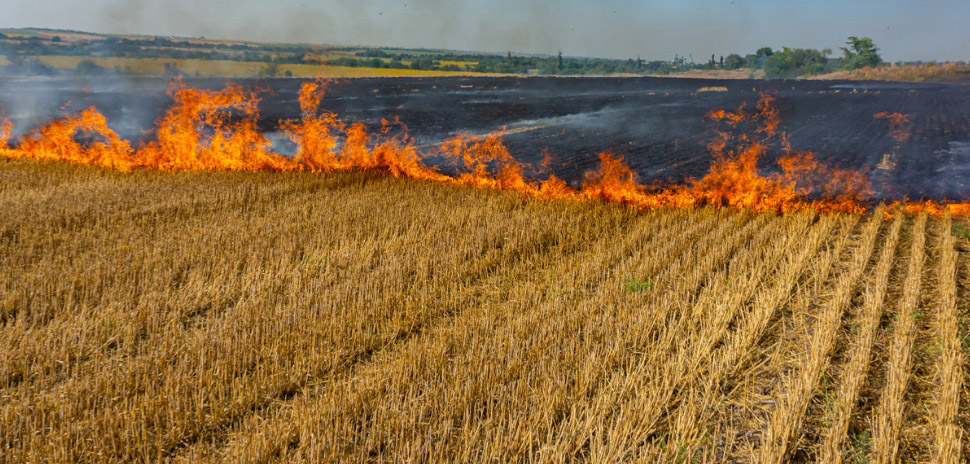
The American Association of Community Colleges, in partnership with the National Science Foundation, announced that it has selected 12 finalist teams to advance to the June 2024 final round of the Community College Innovation Challenge—and one of the teams is from right here in North Texas.
A team from Dallas College is among the 12 finalists, advancing to the final round for its project “Autonomous Monitoring for Blaze Emergency Response (AMBER).”
An early detection system that can spot fire risks before they get out of hand, AMBER uses infrared cameras and sensors to alert farmers and local authorities. When it’s combined with a third-party drone provider, AMBER can quickly track and mobilize a rapid fire response, preserving agricutural land from potentially devastating destruction.
Teams will attend an ‘Innovation Boot Camp’ in June
Now in its eighth year, the CCIC competition seeks to strengthen entrepreneurial thinking among community college students by challenging them to develop “STEM-based solutions to real-world problems.” It also enables students to “discover and demonstrate their capacity to use STEM to make a difference in the world and translate that knowledge into action.”
Teams consist of two to four students and a faculty or administrator team mentor. Finalists—including the Dallas College team—will attend an Innovation Boot Camp in June and interact with entrepreneurs and experts in business planning, stakeholder engagement, strategic communication, and marketplace dynamics.
The boot camp will culminate in a Student Innovation Poster Session on Capitol Hill with STEM leaders and congressional stakeholders.
A final pitch presentation will determine the first, second, and third-place winning teams.
“Congratulations to the 2024 CCIC finalists,” Walter G. Bumphus, president and CEO of AACC, said in a statement. “Once again, I’m inspired by the incredible level of talent and creativity our community college students showcase through the CCIC. Along with our partners at the National Science Foundation, we know this program is a foundation for future scientists, entrepreneurs, and engineers and are very proud to shine the spotlight on these talented future leaders.”
Other finalist teams this year presented solutions for addressing clean water, renewable energy, HIV treatment, healthcare, and assistive technology devices.
The other 11 finalists are:
Coalinga College (California)
Project: Got Calcium: The New Battery Innovation
The Coalinga College team seeks to switch from lithium to calcium batteries to improve cost-effectiveness, safety, and battery performance offering an eco-friendly alternative for energy storage solutions.
Columbus State Community College (Ohio)
Project: Aquavive’s Ripple Effect: Transforming Water Protection
Aquavive is a groundbreaking pollution detection buoy system that offers pristine, potable water accessible to all. Combined with a user-friendly app, Aquavive promotes environmental monitoring and STEM education with the goal of uniting communities to invest in clean water.
County College of Morris (New Jersey)
Project: Using Molecular Solar Thermal Systems as a Solar Alternative
The County College of Morris team proposes to safely and efficiently increase the world’s energy supply through a molecular solar thermal system. This system is non-toxic, cost-efficient, and can capture light energy as heat, and then convert stored heat as energy.
Henry Ford College (Michigan)
Project: Stay Vigilant with Source Alert
Source Alert is an application that connects to internet search engines and word/image processing services to detect the source of information and display it to the user in real-time. Source Alert can serve to raise public awareness to potential misinformation.
Houston Community College, TX
Project: The MaxCap Supercapacitor
MaxCap offers an energy storage technology solution for the electric vehicle market by introducing metal oxide-vertical polyaniline hybrid supercapacitors, which provide greater performance, sustainability, and cost-efficency than current energy storage options.
Hudson County Community College (New Jersey)
Project: S.E.E. (Sound Enabled Emplacement)
S.E.E. is an assistive technology device designed to guide visually impaired individuals to key areas in their home. Through the use of remote, users activate speakers to emit sounds for navigation, which allows for safe, confident, and independent movement.
Itawamba Community College (Mississippi)
Project: ViruShield: Next-Generation Care for HIV Patients
ViruShield is a subcutaneous pump that tests for HIV viral loads and administers doses of medication to an HIV-positive patient to help increase treatment compliance and prevent AIDs.
Perimeter College at Georgia State University (Georgia)
Project: Georgina Care
The Perimeter College team seeks to redesign cervical cancer screening by offering a noninvasive alternative to the speculum. This alternative makes screening more accessible and has the potential to impact cervical cancer mortality rates, especially in low-income countries.
Red Rocks Community College (Colorado)
Project: Bloom Buster
In all 50 states, harmful algae blooms represent an environmental issue that impacts human health and aquatic ecosystems. The Bloom Buster system can effectively remove suspended particles, algae, and other contaminants from lake water leading to water quality improvement.
University of Arkansas Community College at Batesville (Arkansas)
Project: IntelliCline – Smart Ramp
IntelliCline is a smart ramp solution that can adjust slope, height, and temperature to enhance accessibility for people with disabilities. By eliminating common barriers, IntelliCline improves quality of life and creates more inclusive communities.
Virginia Western Community College (Virginia)
Project: Plastic Up Cycling
The Virginia Western team proposes an affordable and sustainable way to reuse plastic through the development of a 3D filament printer, which turns recyclables into reinforced filament. The filament is being used to create specialized materials to rebuild a local school playground.
For updates about the 2024 Innovation Boot Camp and the winners, you can follow @Comm_College or visit www.aaccinnovationchallenge.com.
Get on the list.
Dallas Innovates, every day.
Sign up to keep your eye on what’s new and next in Dallas-Fort Worth, every day.
-

 Education1 week ago
Education1 week agoVideo: Dozens of Yale Students Arrested as Campus Protests Spread
-
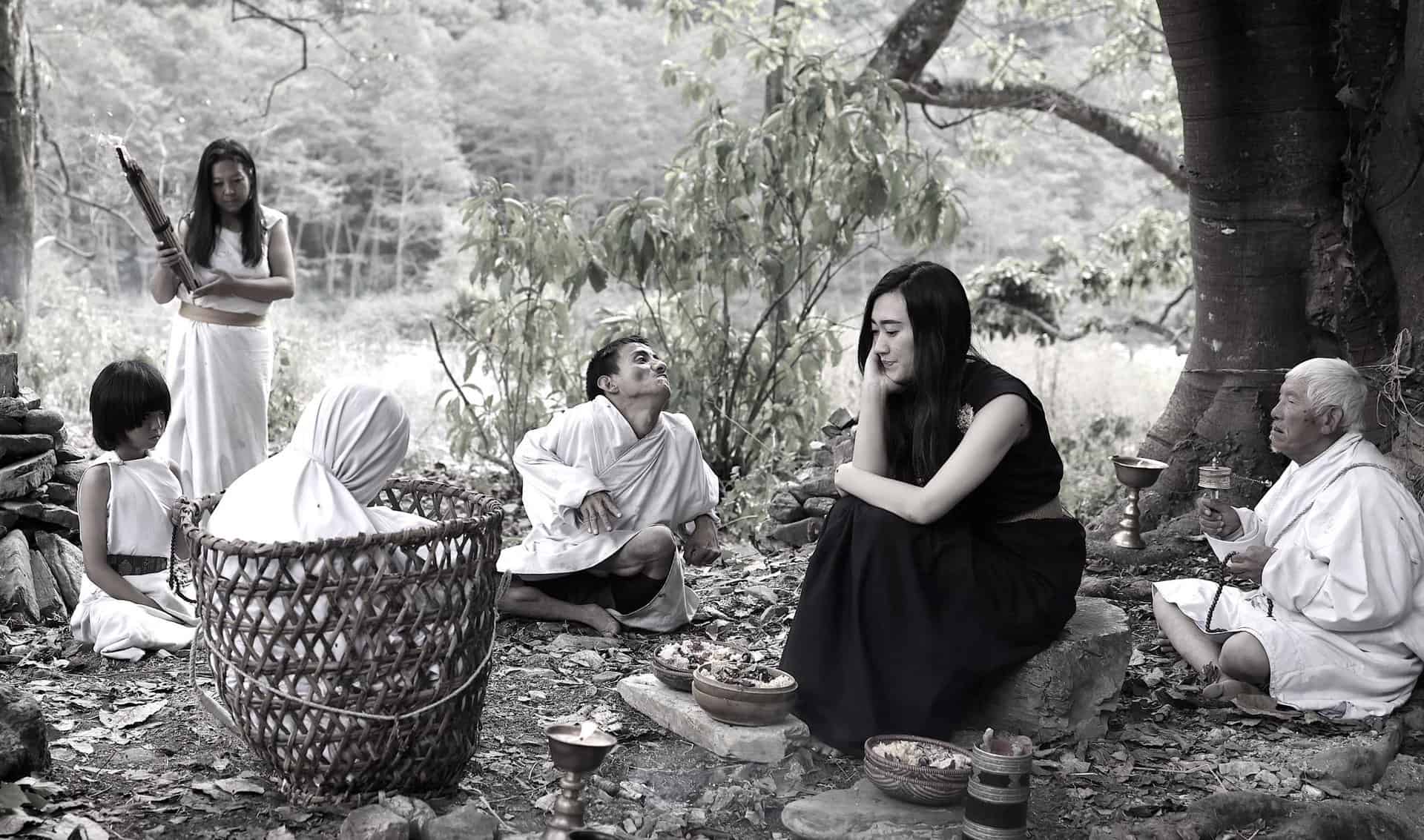
 Movie Reviews1 week ago
Movie Reviews1 week agoShort Film Review: Wooden Toilet (2023) by Zuni Rinpoche
-

 World6 days ago
World6 days agoHaiti Prime Minister Ariel Henry resigns, transitional council takes power
-

 Politics1 week ago
Politics1 week agoFetterman hammers 'a–hole' anti-Israel protesters, slams own party for response to Iranian attack: 'Crazy'
-

 News7 days ago
News7 days agoLarry Webb’s deathbed confession solves 2000 cold case murder of Susan and Natasha Carter, 10, whose remains were found hours after he died
-

 Politics1 week ago
Politics1 week agoA battle over 100 words: Judge tentatively siding with California AG over students' gender identification
-

 World1 week ago
World1 week agoPeriod poverty still a problem within the EU despite tax breaks
-

 World7 days ago
World7 days agoUS secretly sent long-range ATACMS weapons to Ukraine





